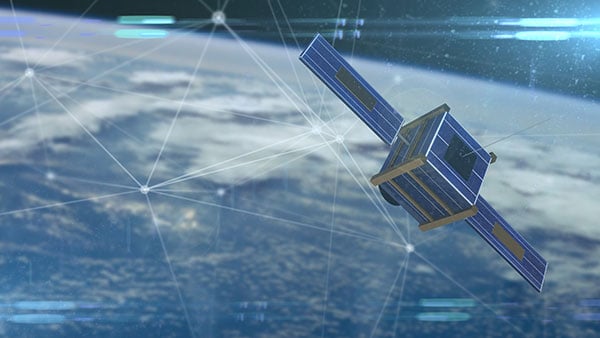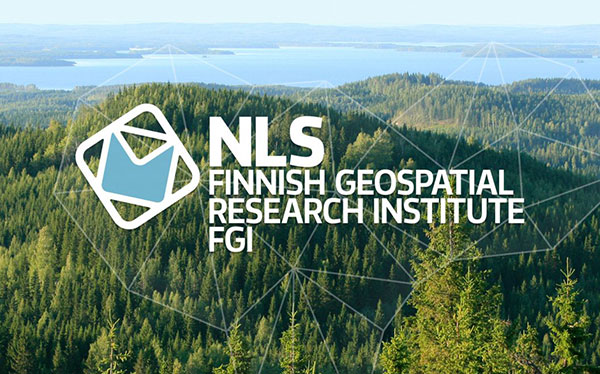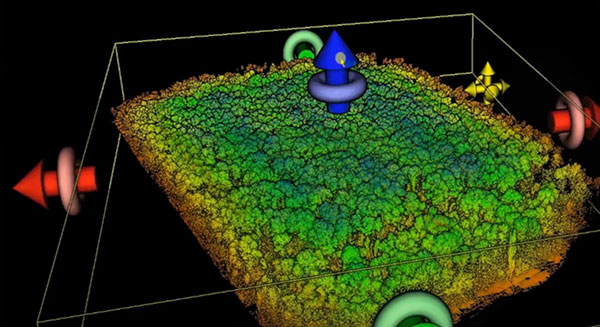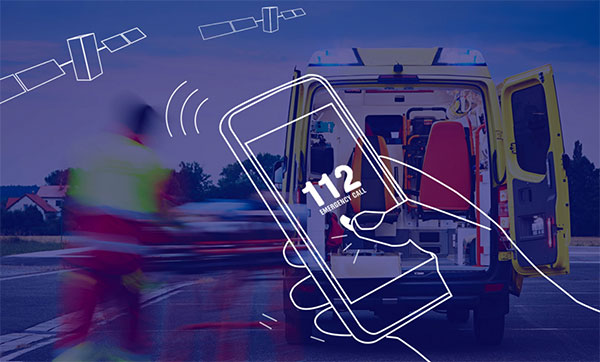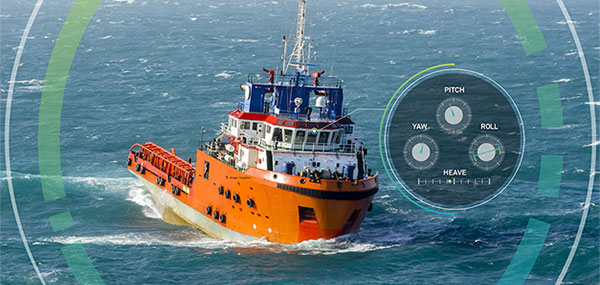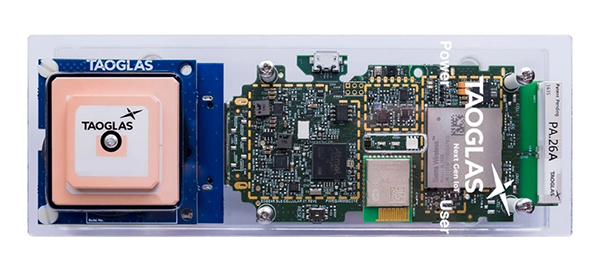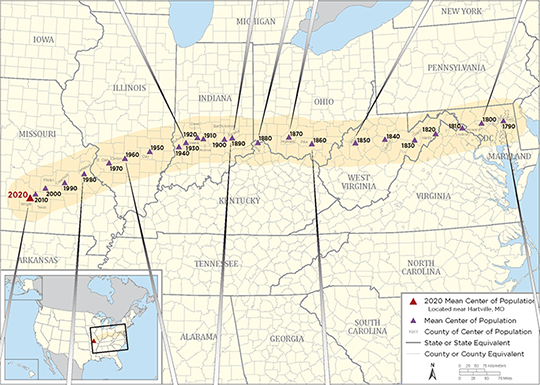
Image: U.S. Census Bureau
The surveying profession is intrinsically involved with many functions of today’s communities and environment. When we take a closer look at the roles we play, the surveyor is usually found in the middle. Here are a few examples.
- For new developments and infrastructure, surveying takes place after a client decides to begin a project. Site data must be collected, drafted and presented to the client, engineers and architects for design.
- Upon completion of the engineering design, the surveyor provides layout services for the construction company to build the structure.
- Once the improvements are completed, the surveyor provides surveys as well as record drawings for confirmation of construction to satisfy government agencies and financial backers.
- In a property dispute, the surveyor becomes the center of attention — our professional opinion determines the correct location of the subject boundary.
This responsibility also extends to the geospatial sectors within the surveying profession. Data collection is a critical step to creating and maintaining efficient geographic information system (GIS) databases that correctly depict existing infrastructure and parcel boundary layers. With the surveyor at the center of many of these duties and tasks, no wonder that we sometimes feel we have a bullseye on our backs.
Knowing how to compute the center is an important aspect of the surveyor’s duty.
However, the word center takes on a different connotation when it comes to data and objects. Properly identifying the center of specific sets of data or objects is important when working with construction information and geospatial data. Properly measuring and marking the center of an installation has its challenges, so knowing how to compute the center is an important aspect of the surveyor’s duty.
Why is the center of an object important?
Every object that is definable in a two-dimensional space has a physical center. Whether the object is a regular or irregular polygon in plane geometry, there are various methods for determining its center.

Figure: Tim Burch
These figures are easy to understand and simple to solve. More complex figures require more calculations, including coordinate geometry.

Figure: Tim Burch
These examples of regular and irregular polygons have something in common: all are based upon two-dimension space, which is flat in nature. But what happens if we need to determine the center of a shape that does not fall on a 2D surface? What if the data being reviewed for a center resides on a spherical surface and contains diverging axes?
As surveyors, we break our work down to smaller coordinate systems to work around the fact our data resides on a spherical surface, but some datasets require the information to remain as latitude and longitude. One dataset is population counts, otherwise known as the census.
The U.S. Census and the ‘center of population’
The U.S. Census Bureau has been at work since early colonial times. This excerpt from the bureau website explains its purpose and foundation.
The U.S. Constitution requires only that the decennial census be a population count. Since the first census in 1790, however, the need for useful information about the United States’ population and economy became increasingly evident.
The decennial census steadily expanded throughout the nineteenth century. By the turn of the century, the demographic, agricultural, and economic segments of the decennial census collected information on hundreds of topics. The work of processing these data kept the temporary Census Office open for almost all the decades following the 1880 and 1890 censuses.
Recognizing the growing complexity of the decennial census, Congress enacted legislation creating a permanent Census Office within the Department of the Interior on March 6, 1902. On July 1, 1902, the U.S. Census Bureau officially “opened its doors” under the leadership of William Rush Merriam.
Counting the citizens of the United States was one thing, but mapping them was another. Once the final count was completed and mapped, the information was used to determine a unique location: the center of population. Here is more from the Census Bureau on the calculation basis:
The concept of the center of population as used by the U.S. Census Bureau is that of a balance point. The center of population is the point at which an imaginary, weightless, rigid, and flat (no elevation effects) surface representation of the 50 states (or 48 conterminous states for calculations made prior to 1960) and the District of Columbia would balance if weights of identical size were placed on it so that each weight represented the location of one person.
More specifically, this calculation is called the mean center of population.
This sounds like an easy exercise for a room of mathematicians and mappers, right? On the contrary, my fellow geospatialists!
How do they determine the center of population?
Computing the center of population for the United States would be much easier if we existed on a two-dimensional plane, as previously discussed. Since we don’t, however, it requires a much more difficult method of calculation to get us closer to a real-world solution:
To avoid unduly complex factors in the computations, the mathematical formulae used were those that would be precise for a true sphere. On such a sphere, the north-south distances between parallels of latitude are identical and distances in degrees may be used as units of distance. On the other hand, distances between meridians on longitude lines, are not constant but decrease from the equator toward the poles. However, if the length of one degree along the equator is used as the unit of measurement, then the length in degrees of an east-west line at any other latitude can be adjusted to the measurement standard by multiplying by the cosine of the latitude.
The center of population computed by the Census Bureau is the point whose latitude (𝜙) and longitude (λ) satisfy the equations:

where 𝜙𝑖, 𝜆𝑖 and 𝑤𝑖 are the latitude, longitude and population attached to the basic small units of area used in the computation.
Stated in less mathematical form, the latitude of the center of population was determined by multiplying the population of each unit of area by the latitude of its population center, then adding all these products and dividing this total by the total population of the United States. The result is the latitude of the population center.
East-west distances were measured, or computed, in substantially the same manner, but with the inclusion of a correction for latitude. For these distances, a degree of longitude at the equator was the unit of measurement. East-west distances along the equator could be measured in degrees, but any east-west degree distance north of the equator — where all the United States is located — had to be adjusted to recognize the convergence of meridians toward the poles. This adjustment required that each east-west distance, stated in degrees of longitude, be multiplied by the cosine of the latitude. This mathematical relationship is precise for a sphere and a very close approximation for the earth.
The computation required that the longitude of each of the thousands of selected points be multiplied by the cosine of the latitude of the point and by the population associated with the point. These products were added and divided by the sum of the products for the same thousands of points, each of which was obtained by multiplying the cosine of the latitude of a point by the appropriate population figure. The result was the longitude of the center of population.
(Courtesy of the Geography Division, U.S. Census Bureau, published November 2021)
Here is a graphic from the U.S. Census identifying significant historical events along with the westward movement of the center of population:

Image: U.S. Census Bureau
Here are the locations with corresponding latitude/longitude for the centers from 1790 to 2020:
Mean Center of Population of the United States, 1790–2020
|
| Census year |
North latitude |
West longitude |
Approximate location |
| United States |
| 2020 |
37.415725 |
92.346525 |
Wright County, MO, 14.6 miles northeast of Hartville. |
| 2010 |
37.517534 |
92.173096 |
Texas County, MO, 2.7 miles northeast of Plato. |
| 2000 |
37.69699 |
91.80957 |
Phelps County, MO, 2.8 miles east of Edgar Springs. |
| 1990 |
37.87222 |
91.21528 |
Crawford County, MO, 9.7 miles southeast of Steelville. |
| 1980 |
38.13694 |
90.57389 |
Jefferson County, MO, 1/4 mile west of DeSoto. |
| 1970 |
38.46306 |
89.70611 |
St. Clair County, IL, 5 miles east-southeast of Mascoutah. |
| 1960 |
38.59944 |
89.20972 |
Clinton County, IL, 6-1/2 miles northwest of Centralia. |
| 1950 |
38.80417 |
88.36889 |
Clay County, IL, 3 miles northeast of Louisville. |
| Conterminous United States |
| 1950 |
38.83917 |
88.15917 |
Richland County, IL, 8 miles north-northwest of Olney. |
| 1940 |
38.94833 |
87.37639 |
Sullivan County, IN, 2 miles southeast by east of Carlisle. |
| 1930 |
39.06250 |
87.13500 |
Greene County, IN, 3 miles northeast of Linton. |
| 1920 |
39.17250 |
86.72083 |
Owen County, IN, 8 miles south-southeast of Spencer. |
| 1910 |
39.17000 |
86.53889 |
Monroe County, IN, in the city of Bloomington. |
| 1900 |
39.16000 |
85.81500 |
Bartholomew County, IN, 6 miles southeast of Columbus. |
| 1890 |
39.19889 |
85.54806 |
Decatur County, IN, 20 miles east of Columbus. |
| 1880 |
39.06889 |
84.66111 |
Boone County, KY, 8 miles west by south of Cincinnati, OH. |
| 1870 |
39.20000 |
83.59500 |
Highland County, OH, 48 miles east by north of Cincinnati. |
| 1860 |
39.00667 |
82.81333 |
Pike County, OH, 20 miles south by east of Chillicothe. |
| 1850 |
38.98333 |
81.31667 |
Wirt County, WV, 23 miles southeast of Parkersburg. |
| 1840 |
39.03333 |
80.30000 |
Upshur County, WV, 16 miles south of Clarksburg. Upshur County was formed from parts of Barbour, Lewis, and Randolph Counties in 1851. |
| 1830 |
38.96500 |
79.28167 |
Grant County, WV, 19 miles west-southwest of Morefield. Grant County was formed from part of Hardy County in 1866. |
| 1820 |
39.09500 |
78.55000 |
Hardy County, WV, 16 miles east of Moorefield. |
| 1810 |
39.19167 |
77.62000 |
Loudoun County, VA, 40 miles northwest by west of Washington, DC. |
| 1800 |
39.26833 |
76.94167 |
Howard County, MD, 18 miles west of Baltimore. Howard County was formed from part of Anne Arundel County in 1851. |
| 1790 |
39.27500 |
76.18667 |
Kent County, MD, 23 miles east of Baltimore. |
Data: U.S. Census Bureau
Not to be confused with the geographic center…
The geographic center of area is the point at which the surface of the United States would balance if it were a plane of uniform weight per unit of area. That point, approximately 44.967° north latitude and 103.767° west longitude, is located west of Castle Rock in Butte County, South Dakota, as it has been since Alaska and Hawaii became states.
The geographic center of the conterminous United States (48 states and the District of Columbia) is located near Lebanon in Smith County, Kansas, at approximately 39.833º north latitude and 98.583º west longitude.
The center of population as geospatial data
The plotting of the center of population makes for an interesting study of westward expansion in early U.S. history. Once the contiguous 48 states were founded, plotting the center shifts to regional changes . The truly interesting part of these calculations and plotting for the past several centuries falls into an area of expertise called geospatial data.
While some liberties were taken early on using large, populated areas as one data point, we now can count literally every person and their geospatial location. However, it needs to be recognized that early efforts to count our population and track its center every 10 years meets the criteria for being called geospatial data. They just didn’t yet know what that meant.
Speaking of surveyors…
Here are several events and initiatives happening this month, an important month for surveyors.

2022 National Surveyors Week
National Surveyors Week was established by the National Society of Professional Surveyors as an annual event to bring public recognition to the surveying profession and the vital services surveyors provide to the advancement and betterment of human welfare.
During this week, thousands of professional surveyors throughout the country will take part in local activities designed to introduce a new generation to the profession and highlight the use of technology in their day-to-day work.
Activities for National Survey Week (or anytime!)
- Have a Survey Day at your local mall.
- Sponsor a Trig-Star Test: www.trig-star.com.
- Conduct a Scouts Merit Badge event.
- Obtain a proclamation from your state or local government.
- Organize geocaching or benchmark hunting: Geocaching.com.
- Try surveying mark recon: SurveyMarkHunting.pdf.
- Help with the National Geodetic Survey’s GPS on Benchmarks Campaign: GPS on BMs
For more ideas on how to get involved, visit National Surveyors Week 2022.
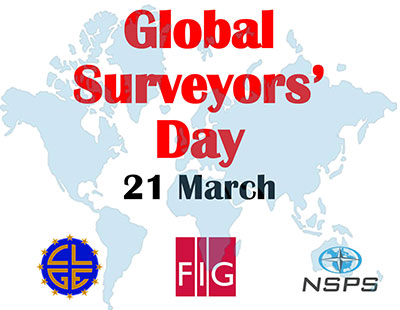
2022 Global Surveyors’ Day
Global Surveyors’ Day 2022 will be held Monday, March 21. This annual event is a way to globally recognize groundbreakers, pioneers, individuals and the industry that has shaped our history and continues to be of great value to our communities.
2022 Global Surveyor of the Year
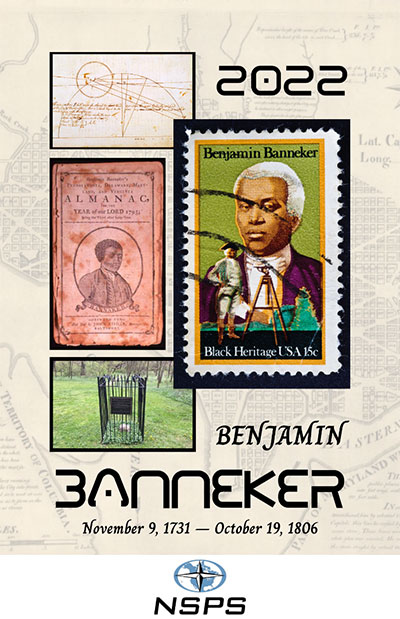
Image: NSPS
As part of the Global Survey Day and National Surveyors Week, every year on March 21 a professional surveying association is tasked with choosing a Global Surveyor of the Year. For 2022, the National Society of Professional Surveyors has been selected to choose a person with a historical surveying background for this prestigious honor. After thorough consideration, NSPS has chosen Benjamin Banneker (1731–1806) for 2022 Global Surveyor of the Year.
The selection was brought before the NSPS Board of Directors during our Spring 2021 meeting and passed by a majority vote. While Banneker’s career as a surveyor was limited in time and experience, his additional contributions to math, science, astronomy and publication of a groundbreaking almanac have earned him a significant place in American history.
We also selected Banneker because of his ability to overcome the adversity of being a free Black man in early colonial America. Through much self-teaching, he was able to excel at the contributions previously listed in a period when Blacks were not accepted for their educational abilities.
The selection committee chose Banneker over the three presidents who are famously chiseled on Mount Rushmore and Henry David Thoreau, an author who also surveyed to fund his writing career. The committee felt that Banneker’s contributions not just to the surveying profession made him deserving of this honor, but considered his total body of work created when Black men were not generally accepted as capable human beings. Our world needs more people like Benjamin Banneker and would be a better place because of them.
No time like the present to promote our geospatial professions
Surveying and geospatial careers are more important than ever, so examples like the center of population help depict applications that us these skills. Please consider promoting our wonderful professions during these events and throughout the year. The profession you promote may provide an opportunity to bring new faces and ideas to our ranks very soon.
Gilla detta:
Gilla Laddar in …

